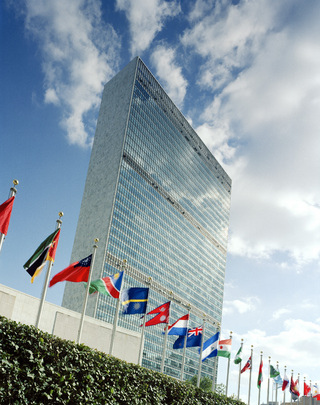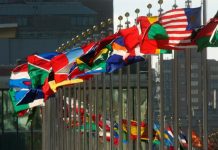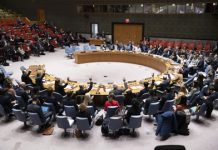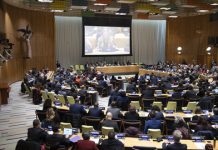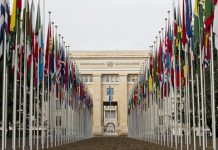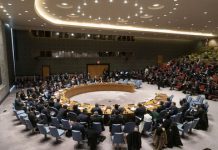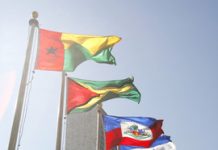Last month, hundreds of thousands of people returned to northern Gaza – where famine was declared at the end of August – but their access to food is “severely limited”, said Abeer Etefa, Senior Spokesperson at the World Food Programme (WFP).
And while many returnees have found their homes in ruins, the displaced who remain in the south are “often living in tents and without access to food and services”, she warned.
Speaking from Cairo, Ms. Etefa said that three and a half weeks into the fragile ceasefire, WFP has distributed food parcels to around a million people across the Strip against a target of 1.6 million, as “part of the broad operation to push back hunger in Gaza”.
“Supplies are still limited, so each family is receiving a reduced food ration, which is one parcel, and that’s enough food for 10 days,” she explained.
To continue to expand operations to the level required, “we really need more access, more border crossings to be opened and… more access to key roads inside Gaza”, the WFP spokesperson insisted.
Aid crossings still closed
UN aid coordination office OCHA said on Monday that no food aid convoy has reached the north via any direct crossings since 12 September.
“We still have only two border crossing points that are operational,” Ms. Etefa emphasized, referring to Kerem Shalom in the south of the enclave and Kissufim in central Gaza. “This severely limits the quantity of aid that WFP and other agencies are able to bring in to stabilize the markets and to address people’s needs,” she said, highlighting the fact that the continued closure of the northern crossings into the Gaza Strip means that aid convoys are obliged to “follow a slow, difficult route from the south.”
The UN food relief agency spokesperson also said that some 700,000 people receive fresh bread on a daily basis through 17 WFP-supported bakeries, nine in south and central Gaza and eight in the north, with a goal to ramp up to 25.
Speaking from Gaza, WFP Communications Officer Nour Hammad said that while she was witnessing “apocalyptic scenes” across the enclave she also saw on people’s faces “the joy that the guns have fallen silent after all this time and the fear of whether or not the silence will last”.
She said that Gazans likened the destruction brought on by over two years of war to “the aftermath of an earthquake”.
‘This help matters’
“In every distribution point I have been to across the Gaza Strip over the past couple of days, people tell me one thing: this assistance matters,” she said. After months of “surviving on bits and pieces, rationing food, stretching one meal over days”, people are finally accessing “fresh bread, food parcels, cash transfers, nutrition and support”.
“This is where the journey to recovery starts,” she stressed.
While 200,000 of the most vulnerable are now receiving digital cash payments in order to “complement the food baskets with fresh foods” from local markets, prices there remain prohibitive.
“Food is slowly coming back to the shelves, but prices are still beyond the reach of families, considering… that they have depleted their resources to survive two years of war,” Ms. Hammad said. “Today, for example, I buy one apple at the cost of a kilo before the war,” she explained.
The fragility of the ceasefire and of aid flows is at the centre of people’s preoccupations, Ms. Hammad said, as she told the story of a displaced mother whom she met in Gaza City. Even though the woman is receiving assistance she has warned her children against eating the rations right away as “she cannot trust that tomorrow we’ll bring food too,” the WFP communicator said.
“Families invite us into their tents…worn out by winter cold and summer heat, and they want to show us their reality. And their reality is that people need food. People need shelter, people need warm clothing because winter is around the corner and they need continued support,” she concluded.
Source of original article: United Nations (news.un.org). Photo credit: UN. The content of this article does not necessarily reflect the views or opinion of Global Diaspora News (www.globaldiasporanews.net).
To submit your press release: (https://www.globaldiasporanews.com/pr).
To advertise on Global Diaspora News: (www.globaldiasporanews.com/ads).
Sign up to Global Diaspora News newsletter (https://www.globaldiasporanews.com/newsletter/) to start receiving updates and opportunities directly in your email inbox for free.


